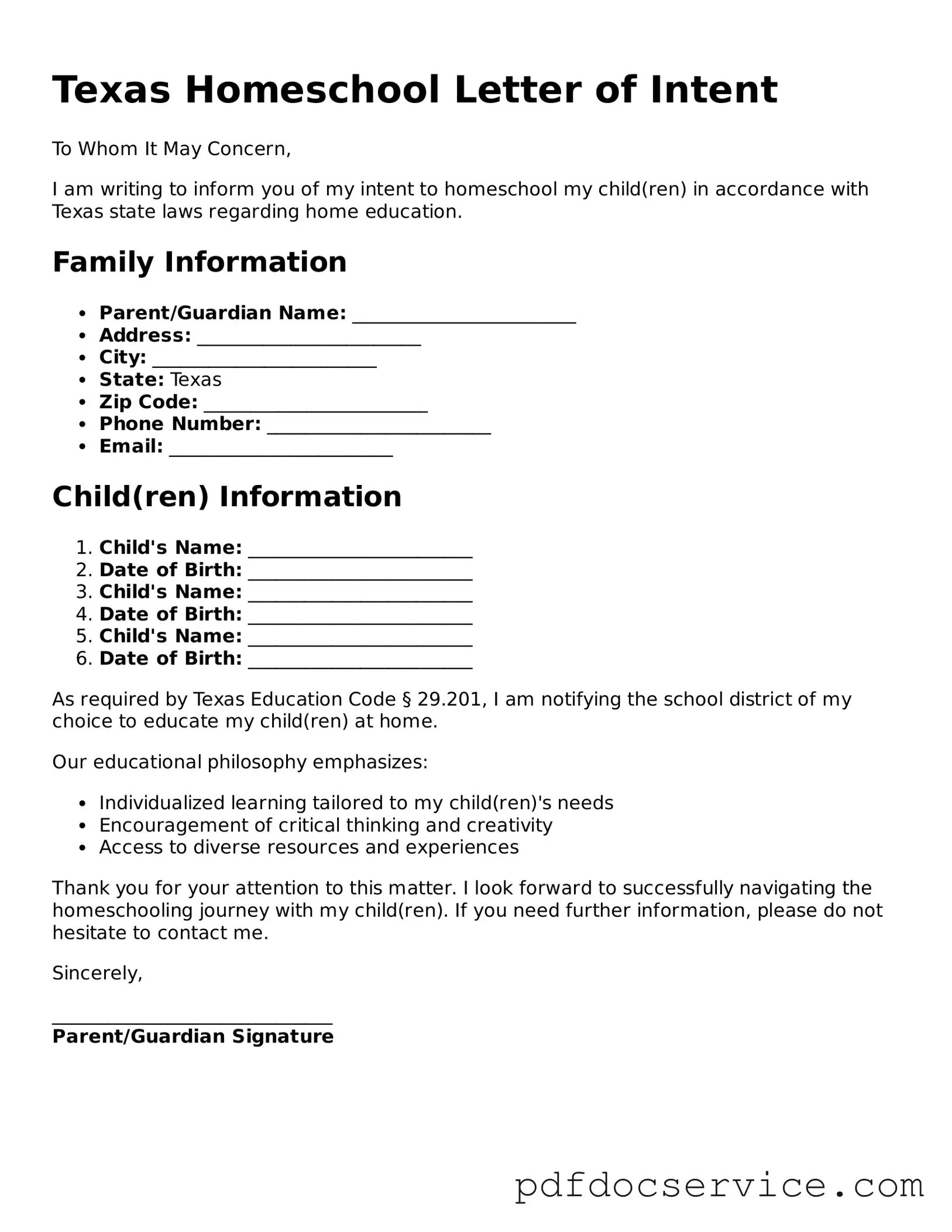What is the Texas Homeschool Letter of Intent?
The Texas Homeschool Letter of Intent is a simple document that parents or guardians must submit to officially notify the state of their intention to homeschool their children. This letter is a crucial first step in the homeschooling process, as it informs the local school district that you will be taking your child out of the public school system to provide home-based education. It’s important to understand that this letter is not a request for permission; rather, it serves as a formal declaration of your educational choice.
Who needs to submit the Letter of Intent?
Any parent or guardian who wishes to homeschool their child in Texas must submit the Letter of Intent. This applies to children who are currently enrolled in public school, as well as those who have never attended school. If you are starting your homeschooling journey or transitioning from public or private schooling, this letter is essential to keep your educational plans on track.
When should I submit the Letter of Intent?
It's best to submit the Letter of Intent as soon as you decide to homeschool your child. While there is no specific deadline mandated by the state, doing so before the school year begins can help ensure a smooth transition. If your child is currently enrolled in public school, submitting the letter before the school year starts can also help avoid complications with attendance records.
Are there any specific requirements for the Letter of Intent?
The Texas Homeschool Letter of Intent is straightforward and does not require extensive details. However, it should include:
-
Your name and address.
-
Your child's name and age.
-
A statement of your intent to homeschool.
While the state does not provide a specific format, ensuring that all necessary information is included will help avoid any issues. Keep a copy for your records, just in case you need to reference it later.
What happens after I submit the Letter of Intent?
Once you submit the Letter of Intent, you can begin your homeschooling journey! The school district will not respond to the letter, but it is important to keep track of your educational activities and maintain records of your child's progress. Texas law does not require you to follow a specific curriculum, but you are responsible for ensuring that your child receives an education that meets their needs. Regularly reviewing your child’s progress will help you stay on track and make any necessary adjustments to your teaching methods.
